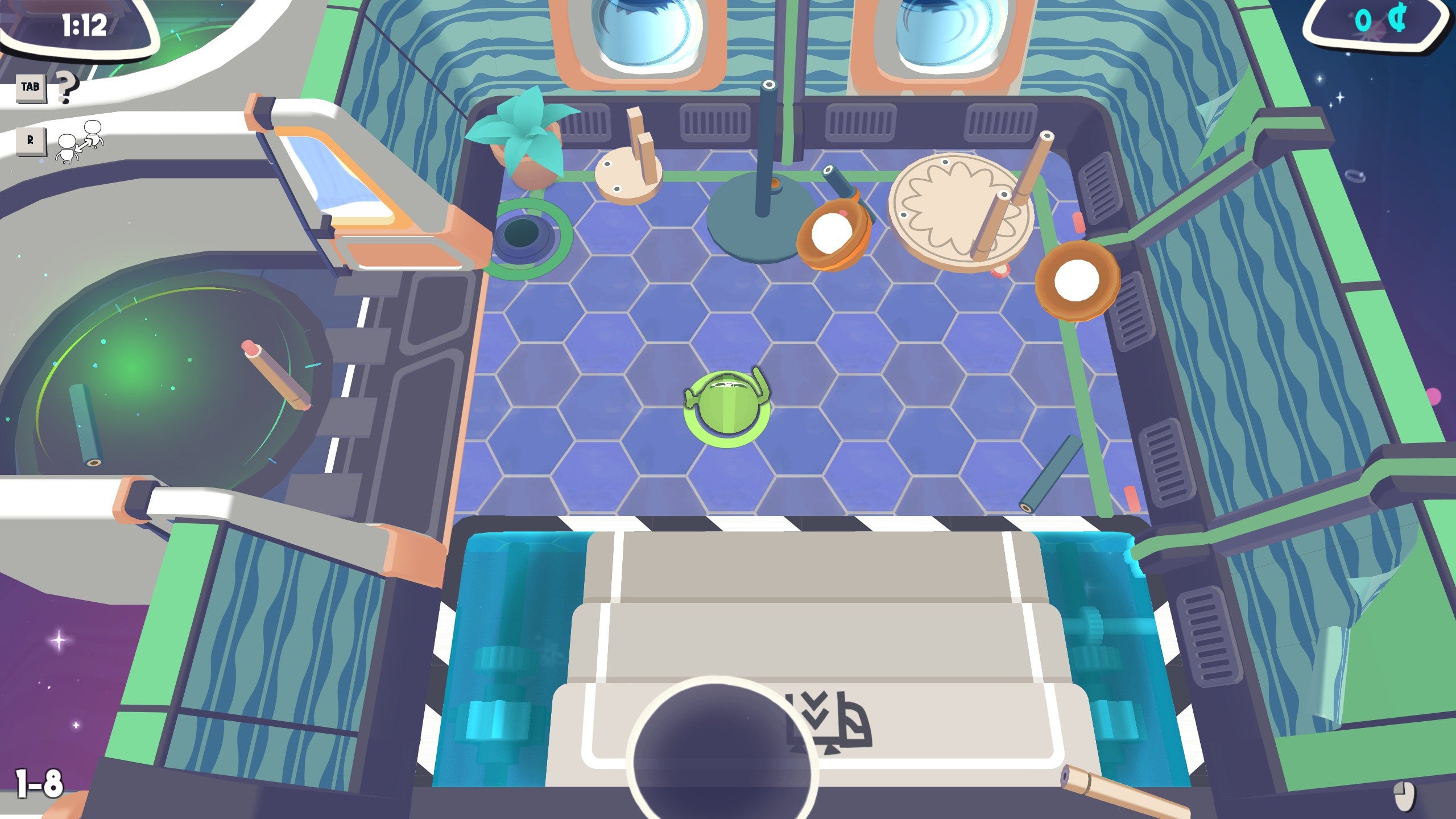I don’t want to brag, but my sister and I think of ourselves as somewhat seasoned co-op professionals. We grew up playing games together, turning games which weren’t even meant to be played in co-op into multiplayer experiences (like splitting a controller in half to play Tekken 3’s Force mode). So when I heard about KallaX, a co-op game about aliens building furniture in space, I wondered whether we’d be able to master the art of assembly.
KallaXDeveloper: UnexpectedPublisher: UnexpectedPlatform: Played on PCAvailability: Out now on PC (Steam)
You see, KallaX gives you instructions like you’d expect of its Swedish namesake (Kallax are those cube shelving units sold by IKEA that have practically invaded every house on the planet), but only one person can look at the manual at a time. No crowding around an A5-sized booklet and bumping shoulders to figure out minimalistic diagrams, but a real test of communicating effectively.
We’ve played peaceful co-op games before, puzzlers like Death Squared and Portal, timed stressful ones (Overcooked, Unrailed, you name it), and escape rooms with an asymmetric flavour, but we’ve never tried a game with those three things combined. I wasn’t sure how those elements would pan out together and whether it would click with us.
After playing the first 20 levels of KallaX, we definitely found our rhythm. The game starts you out on a series of easy tutorial levels to get you used to the controls. Press A to hold a piece, press X twice to connect two pieces together. If you make a mistake, you can disassemble the furniture by chucking it into the designated bin window and watch it float into space.
The first furniture designs the game introduces you to are simple enough. Some like the small stool or tall lamps don’t require any customisation, whereas things like tables and cabinets will need to have a certain pattern. We quickly devised our language to describe what was needed – “short legs”, “dark inside”, a tally of jelly beans placed inside a piñata – and things were going pretty smoothly.
